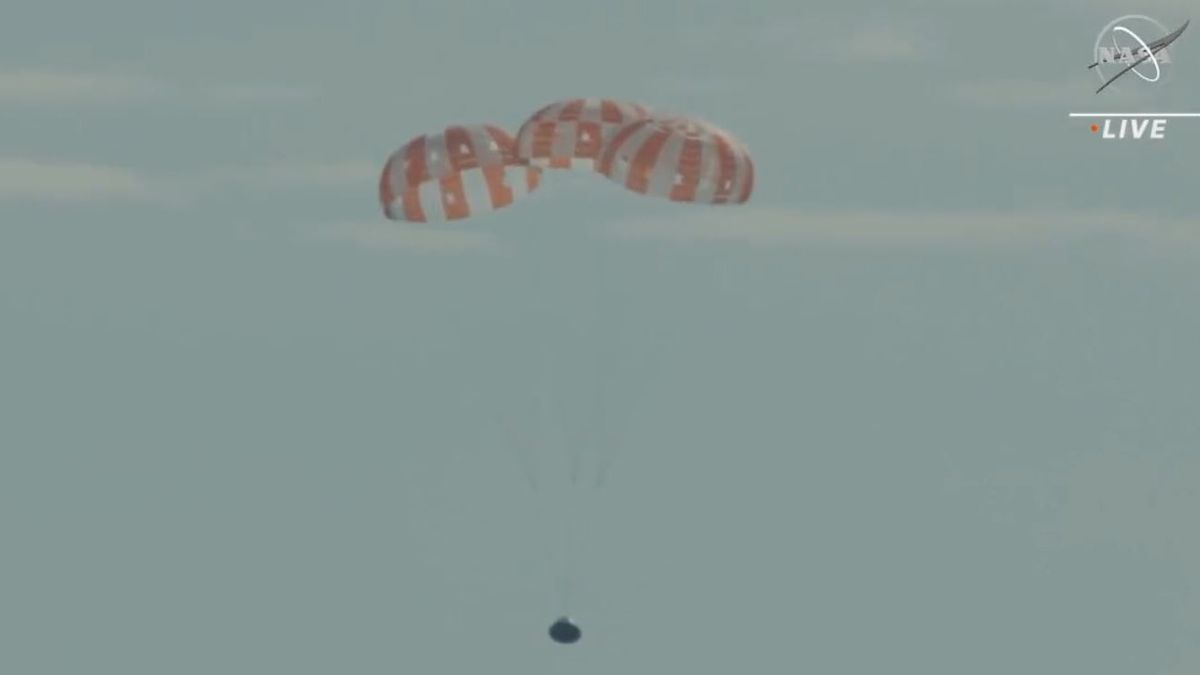JAKARTA - NASA's spacecraft, Orion, has successfully returned to Earth. The unmanned capsule safely plunged into the Pacific Ocean off the coast of Baja, California, Mexico at around 12:40 ET (00.40 WIB) on Sunday, December 11 marking the end of the important Artemis I mission.
The capsule reaches a speed of about 24,500 mph on its return to Earth, while its heat shield withstands a hot temperature of about 5,000 degrees Fahrenheit. Orion traveled a total of 1.4 million miles through space over a range of 25.5 days.
When re-entering Earth's atmosphere, the Orion capsule successfully maneuvered in, where Orion descended into Earth's upper atmosphere and lifted before re-entry. This move should help the spacecraft land at the designated landing site and is the first for a spacecraft designed to carry humans.
Splashdown. After traveling 1.4 million miles through space, orbiting the Moon, and collecting data that will prepare us to send astronauts on future #Artemis missions, the @NASA_Orion spacecraft is home. pic.twitter.com/ORxCtGa9v7
— NASA (@NASA) December 11, 2022
Once about 24,000 feet from the ground, the capsule began deploying its parachute to help it slow down as it descended into the Pacific Ocean. The US Navy began the process of recovering the spacecraft shortly after landing, but it would take several hours to complete it.
Now that Orion returns to land, NASA will begin taking data from the mannequin equipped with sensors inside so that it can prepare for future missions involving humans. NASA's second Artemis mission, scheduled for 2024, will send a group of astronauts around the Moon.
NASA plans to bring humans back to the lunar surface on the Artemis III mission, but this may happen until the earliest in 2026.
"From the world's most powerful rocket launch to the incredible journey around the Moon and back to Earth, this test flight is a major step forward in the lunar exploration of Generation Artemis," NASA Administrator Bill Nelson said in a statement.
"Today is a big win for NASA, the United States, our international partners, and all mankind," Nelson said.
After several delays, NASA's spacecraft, the Space Launch System (SLS) took off on November 16 and launched a Orion capsule on a mission around the moon. The capsule passes through the Bula within 81 miles of the lunar surface before it explodes 57,000 miles outside of the moon, where it enters a long orbit for about a week.
Sekitar setengah jalan misi, pesawat ruang angkasa mencapai 268.563 mil jauh dari Bumi, jarak terjauh yang pernah tercapai oleh pesawat ruang angkasa yang bisa ditumpangi manusia.
The English, Chinese, Japanese, Arabic, and French versions are automatically generated by the AI. So there may still be inaccuracies in translating, please always see Indonesian as our main language. (system supported by DigitalSiber.id)













